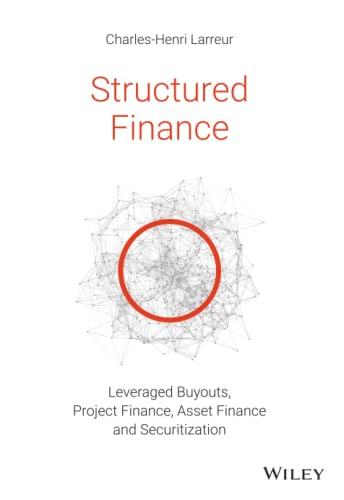Question
Ratios from Comparative and Common-Size Data Consider the following financial statements for Vega Company. During the year, management obtained additional bond financing to enlarge its
Ratios from Comparative and Common-Size Data Consider the following financial statements for Vega Company. During the year, management obtained additional bond financing to enlarge its production facilities. The plant addition produced a new high-margin product, which is supposed to improve the average rate of gross profit and return on sales. As a potential investor, you decide to analyze the financial statements:
| VEGA COMPANY Balance Sheets (Thousands of Dollars) | ||
|---|---|---|
| Dec. 31, 2013 | Dec. 31, 2012 | |
| Assets | ||
| Cash | $25,000 | $20,100 |
| Accounts receivable (net) | 43,000 | 25,400 |
| Inventory | 109,000 | 76,000 |
| Prepaid expenses | 5,500 | 7,000 |
| Plant and other assets (net) | 467,500 | 431,500 |
| Total Assets | $630,000 | $540,000 |
| Liabilities and Stockholders' Equity | ||
| Current liabilities | $80,000 | $49,000 |
| 9% Bonds payable | 191,500 | 154,000 |
| 8% Preferred stock, $50 Par Value | 64,000 | 64,000 |
| Common stock, $10 Par Value | 229,000 | 229,000 |
| Retained earnings | 85,500 | 64,000 |
| Total Liabilities and Stockholders' Equity | $630,000 | $540,000 |
| VEGA COMPANY Income Statements (Thousands of Dollars) | ||
|---|---|---|
| 2013 | 2012 | |
| Sales revenue | $844,000 | $701,500 |
| Cost of goods sold | 556,000 | 478,000 |
| Gross profit on sales | 288,000 | 223,500 |
| Selling and administrative expenses | 235,000 | 178,000 |
| Income before interest expense and income taxes | 57,000 | 49,500 |
| Interest expense | 20,800 | 17,500 |
| Income before income taxes | 40,200 | 36,000 |
| Income tax expense | 14,100 | 12,600 |
| Net income | $26,100 | $23,400 |
| Other financial data (thousands of dollars) | ||
| Cash provided by operating activities | $30,000 | $25,000 |
| Preferred stock dividends | 4,800 | 4,800 |
Required a. Calculate the following for each year: current ratio, quick ratio, operating-cash-flow-to-current liabilities ratio (current liabilities were $42 million at January 1, 2012), inventory turnover (inventory was $68 million at January 1, 2012), debt-to-equity ratio, times-interest-earned ratio, return on assets (total assets were $472 million at January 1, 2012), and return on common stockholders' equity (common stockholders' equity was $266 million at January 1, 2012).
b. Calculate common size percentage for each year's income statement. a. Round answer to two decimal places.
| 2013 | 2012 | |||
|---|---|---|---|---|
| Current ratio: | _____? | _____? | ||
| Quick ratio: | _____? | ______? | ||
| Operating-cash-flow-to-current-liabilities ratio: | _____? | ______? | ||
| Inventory turnover: | _____? | ______? | ||
| Debt-to-equity ratio: | _____? | ______? | ||
| Times-interest-earned ratio: | _____? | ______? | ||
| Return on assets: | ____? | % | _____? | % |
| Return on common stockholders' equity: | ______? | % | ______? | % |
b. Round answers to one decimal place.
| Common-Size Percentages | ||
|---|---|---|
| 2013 | 2012 | |
| Sales revenue | _____?% | ____?% |
| Cost of goods sold | _____?% | _____?% |
| Gross profit on sales | _____?% | _____?% |
| Selling and administrative expenses | _____?% | _____?% |
| Income before interest expense and income taxes | _____?% | _____?% |
| Interest expense | _____?% | _____?% |
| Income before income taxes | _____?% | _____?% |
| Income tax expense | _____?% | _____?% |
| Net income | _____?% | _____?% |
Step by Step Solution
There are 3 Steps involved in it
Step: 1

Get Instant Access to Expert-Tailored Solutions
See step-by-step solutions with expert insights and AI powered tools for academic success
Step: 2

Step: 3

Ace Your Homework with AI
Get the answers you need in no time with our AI-driven, step-by-step assistance
Get Started


